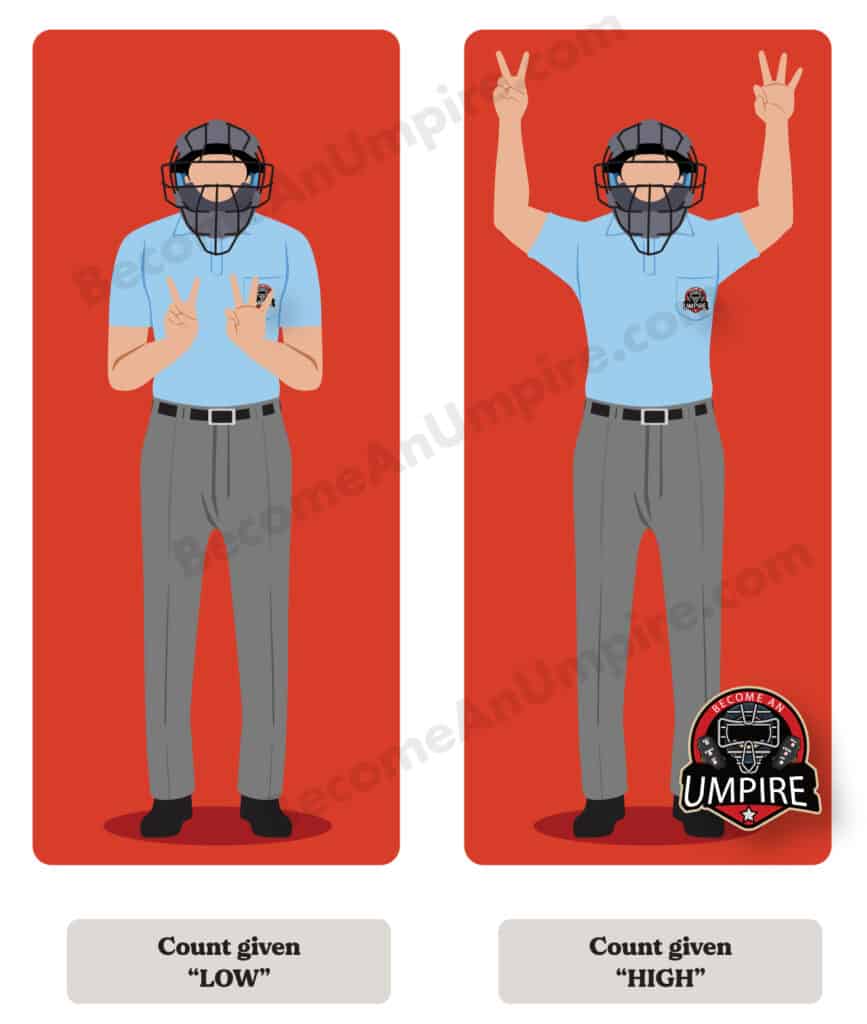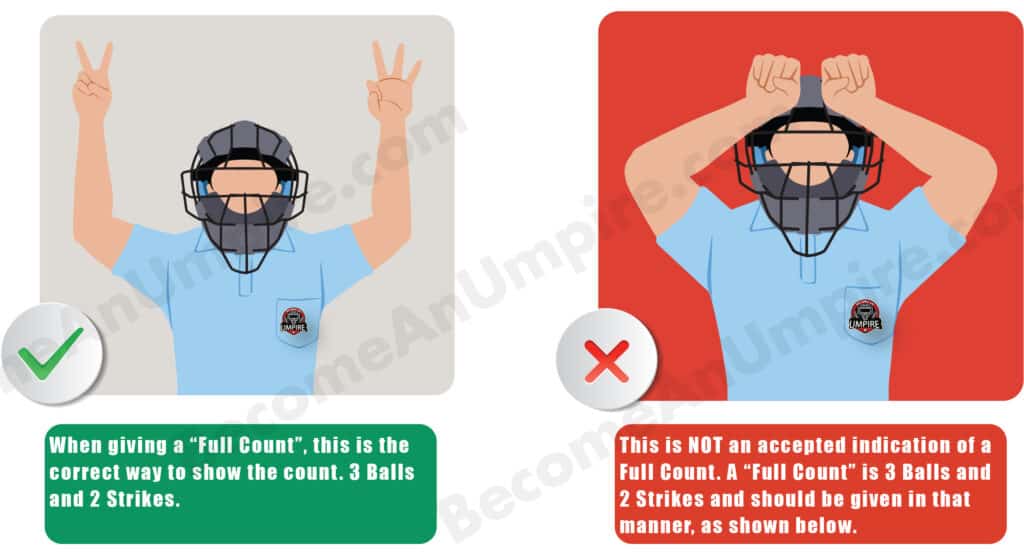As an experienced umpire with years of practice, I am confident in sharing the do’s and don’ts of giving the count on the field. Understanding these guidelines is crucial for any umpire looking to make accurate calls and maintain control of the game.
As an umpire, one of your primary responsibilities is to give the count during the game. The count is the number of balls and strikes on a batter, and it affects the outcome of every pitch. There is a correct way to give the count during the game.
Proper Methods Of Giving The Count

Indicate strike with fingers on the right hand and balls with fingers on the left hand. It’s best to give it “two balls, one strike,” as opposed to “Twenty-one” or “Two and one.” Also, when you give the count visually, use the middle and index fingers to indicate a two-ball or two-strikes count. Don’t use the index finger and the little finger. When you give the count, give it authoritatively and face the pitcher. This makes it easier for your partner to see and others to hear.
Giving the count to one dugout, the pitcher, and the other dugout is unnecessary. Remember that people can’t always see the count but can often hear it. Therefore, when you give the count visually, also give it verbally.
Giving The Count High
You can give the count up high or low depending on the situation and who is asking for the count. If there is no scoreboard, or you are trying to correct a scoreboard error, the umpire can give the count high. To give the count high, raise the arms so the upper arms are parallel to the ground and the forearms are at an approximate 90-degree angle. Then, show the count.

Giving The Count Low
The umpire can also give the count low. If there is a scoreboard, or you are indicating the count to the pitcher and your partner. To do this, hold the hands directly in front of the chest and show the count. There are different reasons during the game to give t count. Examples of why you might provide the count are:
- The batter may ask
- Your partner may ask
- To inform players of critical situations
- Coach may ask
It’s important to remember why you are giving the count. Give the count accurately and confidently. I like to provide the count every couple of pitches, but I will always give it if someone asks or there is a situation where the pitch could affect the outcome of the next play.
But there are also some do’s and don’ts to remember. So, let’s dive in and look at a few best practices for giving the count as an umpire.

Do
- Use Clear and Consistent Signals One of the most essential things an umpire can do when giving the count is to use clear and consistent signals. This helps both teams and fans understand what’s happening on the field, and it also helps prevent confusion or misunderstandings. Ensure your signals are easy to see and understand from all angles of the field, and always use the same signals throughout the game.
- After a check swing and getting help from your partner, if your partner says that the batter did indeed swing, give the new count. We do this because you originally called a ball, and the base umpire has given you help and changed the pitch to a strike.
- Being confident and authoritative is vital when giving the count as an umpire. Players, coaches, and fans look to you for guidance, so you must project a sense of authority and confidence when making your call. Stand tall, use a clear and authoritative voice, and make your signals clear with purpose and conviction.
- Know the Rules. As an umpire, you must understand the rules of the game thoroughly. This includes the regulations around the count, such as what constitutes a ball or a strike and when a batter can walk or be called out. Ensure you’re familiar with the rules before the game starts, and be prepared to make the right call when the situation arises.
Don’t
- Do not call out a full count or use your fists to signal. The correct signal is using consecutive fingers and verbally calling out three balls and two strikes.
- Don’t separate your fingers when giving the count. Keep your fingers together and use consecutive fingers to indicate the count.
- Don’t call out strikes after balls. Always verbalize balls first and then strikes.
- If a coach asks for the count, you don’t have to turn to them and show them. Keep your count out in front and verbalize it for everyone to hear. If you keep your count out in front of your body and veriablize it clearly and loud they will hear it. Everyone can see your signals when keeping them in front of your body.
PRO TIP
When the count is less than one ball, it is acceptable to call out the count as 0-1 or 0-2. It would be best if you never verbalized it as NO Balls. Trust me on this.
